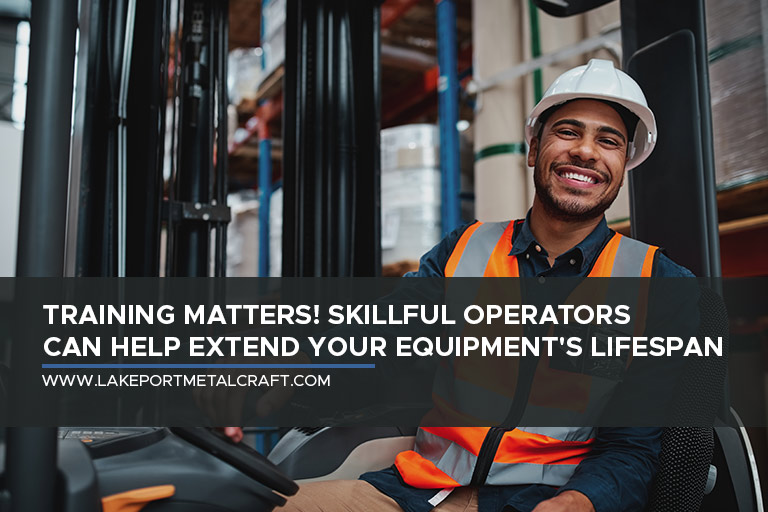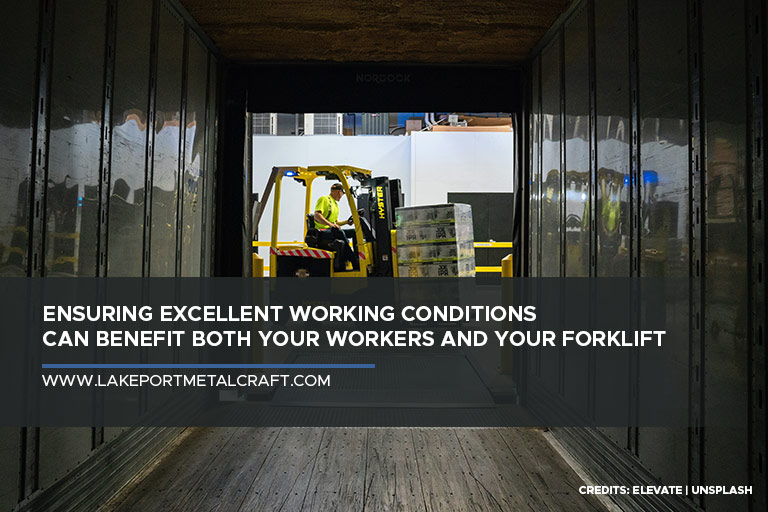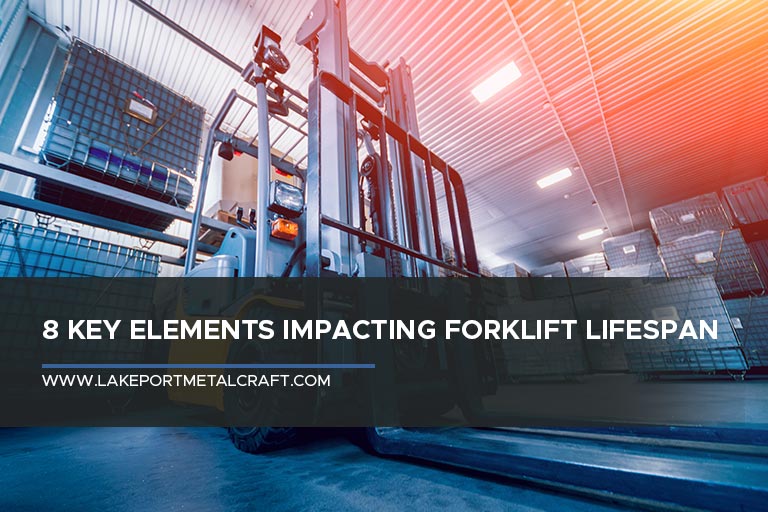There’s more to keeping your forklift fleet operating smoothly and effectively than just regular maintenance. You have to make a multitude of other choices. The state and functionality of this in-demand equipment are influenced by many factors that need your attention.
Let’s explore the 8 key elements impacting a forklift‘s performance and longevity.
1. Forklift Type
The 3 basic forklift options are electric, diesel, and gasoline. Each forklift type needs its own specific energy source and its own set of maintenance protocols, both of which impact its operational life expectancy. Bearing this in mind and taking into consideration the nature of each engine, it’s a fair assumption that electric forklifts last longer than diesel and gasoline types.
2. Frequent Maintenance & Servicing
Regular maintenance is a vital necessity to ensure a prolonged forklift lifespan. Oil changes, filter replacements, and comprehensive inspections allow you to detect problems early, mitigate them, and even work on preventing future cases.
Electric forklifts are extremely low-maintenance. On the other hand, diesel and gasoline forklifts, which are typically used for high-demand operations, require more frequent upkeep for them to last longer in the field.
3. Operating Conditions
Exposure to extreme temperatures, excessive humidity, and corrosive substances can accelerate the wear and tear of even the hardiest forklift. To ensure that your forklift has ample protection against the elements (natural or otherwise), it’s vital to ensure the storage and operations areas have sufficient ventilation, controlled temperatures, and safeguards against water intrusion. These conditions are necessary to prolong the lifespan of your equipment.
4. Operator Skills & Development

While it may not seem obvious at first, your operators (and, ultimately, how they handle the equipment) play a vital role in the lifespan of your forklift. Well-trained operators are savvy when it comes to the best practices when operating a forklift, minimizing the risk of accidents and damage. They know how to drive carefully, even in the smallest of spaces. They know how to maximize the use of the forklift without overworking its engine and other parts.
Training for operators is just as valuable for work safety as a rear guard for forklifts — but they offer more than that. Proper training extends forklift operational life expectancy as well.
5. Workload Management
Putting too much weight on a forklift can be a detriment to both safety and forklift functionality. The importance of adhering to weight limits and load rules cannot be understated if you want to minimize the risks of accidents and equipment failure.
In addition to weight, it’s also important to pay close attention to how you load the forklift. Loading cargo properly and in the designated area ensures that the weight is distributed evenly. This can help you avoid straining certain parts of the forklift and damaging them.
6. Work Environment

A clean and organized workspace doesn’t just contribute to aesthetic appeal, it can also impact how much wear and tear your forklift experiences and how long it will last. Factors like dirt, dust, and uneven surfaces can cause trouble. Damage may be unnoticeable at first, but it can accumulate and worsen over time. When you make it a point to keep the operation floor as neat and tidy as possible, you lower your forklift’s exposure to harmful elements while also providing a more conducive environment for your workers.
7. Proactive Component Replacement
While most of the factors that shorten forklift lifespan can be avoided, one thing you have absolutely no control over is time. Time will wear down all things, including machines. Fortunately, there is something you can do to mitigate further issues when wear and tear do become noticeable. You must be proactive; replace older, problematic, and worn parts before they result in even greater damage. Also, listen to your operators when they alert you to small, seemingly innocuous problems with the equipment. It’s best to catch issues early. You will also benefit from taking measures to anticipate when parts might give out. Stay one step ahead so you can maintain forklift performance and overall productivity.
8. Quality of Parts Use
While replacing parts at the right time is essential, that is not the only thing to consider when you’re swapping out components. How well and how long your forklift runs also depends on the quality of the new components. Forklifts designed for high performance are put through extremely demanding conditions like lifting oversized objects and maneuvering on uneven terrain. Manufacturer recommendations are more than suggestions; you will benefit from considering their guidelines as laws. Your forklift will be more dependable and less likely to fail if you stick to their recommendations. By choosing these high-quality components, you are establishing a solid foundation for your forklift’s long-term success.
Protecting the lifespan of your forklift is invaluable. However, it is not the only thing that needs the right fail-safes. You should also make sure that you protect the lives of your drivers and workers. Our forklift rear post in Toronto can do just that. The Backbone is the ultimate protection against one of the deadliest forklift accidents —underride . Place your order with Lakeport Metalcraft; dial 416-587-5809 today.

